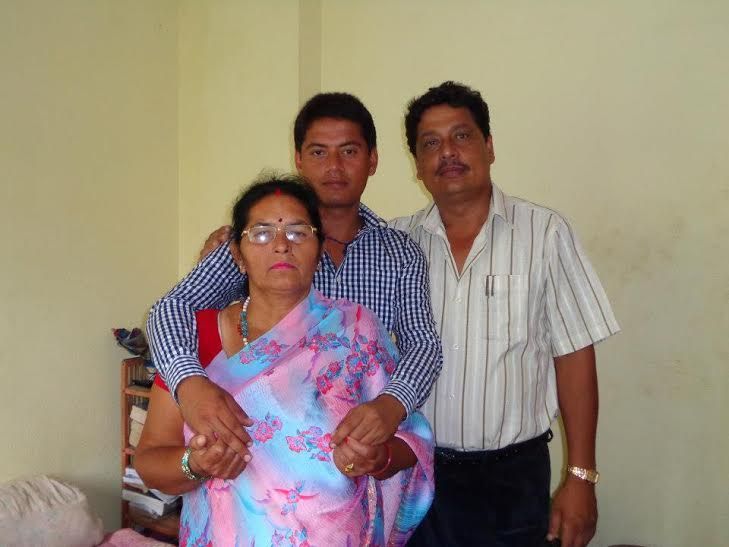Earthquake hits home for Nepalese ISU students
Nepal earthquake
April 27, 2015
Something very terrible happened.
These are the words Rajiv Kaudal groggily woke up to early Saturday morning upon news of the earthquake that hit Nepal’s capital and surrounding areas.
His first thought was, “What about my family?”
The 7.8-magnitude earthquake’s epicenter was north of the Nepali capital, Kathmandu, but its reach extended to almost 150 miles in all directions. Now totaled at more than 4,000 deaths and 6,000 injuries have been reported, but Kaudal said he expects the number to climb as more information from surrounding villages is collected.
Kaudal is from a smaller town about 60 miles from Kathmandu. His mother, sister and father were all at home, but his brother, an architect who often travels, was last known to have been working in Kathmandu.
“I was worried he would have been working on a building and it would have collapsed,” Kaudal said.
He heard of the earthquake about 6:30 a.m. CDT, but didn’t get to read a full article on the situation until about noon. In those six hours, he said his Facebook feed had blown up with prayer and information requests.
While scrolling through his Facebook, he saw that one of his relatives was online and asked if he had heard anything about his immediate family. Kaudal learned his entire immediate family, including his brother, was safe.
His next concern was of the well-being of his extended relatives, who still lived in his birthplace, which happened to be where the epicenter of the earthquake was.
“Someone told me every home is destroyed,” Kaudal said. “Everyone is homeless. We don’t know about casualties.”
As of Sunday evening, Kaudal still hadn’t heard from his extended family.
This worry and concern for their home country led Kaudal and other Nepalese ISU students to create a fundraising movement for the Red Cross.
The Nepal Student Association at Iowa State met Sunday evening to discuss how it can best quickly donate funds to relief efforts.
As of Monday evening, the group hadn’t had an official account set up yet, but was hoping to set up an account through a bank, Kaudal said.
“After we heard the news, we all felt we should do something,” said Man Basnet, adviser to the Nepal Student Association.
The group’s fundraising website is linked to one of the member’s personal account with the idea they will be able to transfer the money to the American Red Cross. But the account has a $5,000 limit, far below the group’s goal of $30,000.
Kaudal said by the end of Monday, the group should have a better idea of how the Ames and ISU community can donate to the relief efforts.
The American Red Cross has a separate donation section for Nepal earthquake relief.
The earthquake and aftershock’s effects caused buildings to sway in Bangladesh and Tibet, at least 34 died in Northern India and at least 17 climbers were killed from avalanches set off around Mount Everest.
A series of before and after photos from The New York Times of Nepali landmarks show a nine-story Dharahara Tower collapsed with debris surrounding the 183-year-old structure.
The 325-year-old Maju Deval temple in Durbar Square in Kathmandu was destroyed.
Secretary of State John Kerry said Peter W. Bodde, the American ambassador to Nepal, issued a disaster declaration that would allow $1 million in humanitarian assistance to be available immediately.
Kaudal said many of the people in the smaller villages cannot read or write and have little access to education, and aren’t taught about how to handle earthquakes and their aftershocks.
“We are not taught in school,” Kaudal said. “They are aware [of the earthquakes], but they are not prepared.” he said.
Kaudal said one of his friends watched another friend jump from a three-story building because he thought that was the safest action.
Another issue in the area, Kaudal said, is the fact that many buildings were built more than 100 years ago, before earthquake-resistant techniques were developed.
“My country has a poor economy,” he said. “The old buildings are not built to withstand earthquakes. People neglect it.”
The association may hold some form of remembrance event or vigil, but is unsure as of when. For now, those who wish to donate to the relief efforts may visit redcross.org or the Nepal Student Association’s interim donation portal.

















